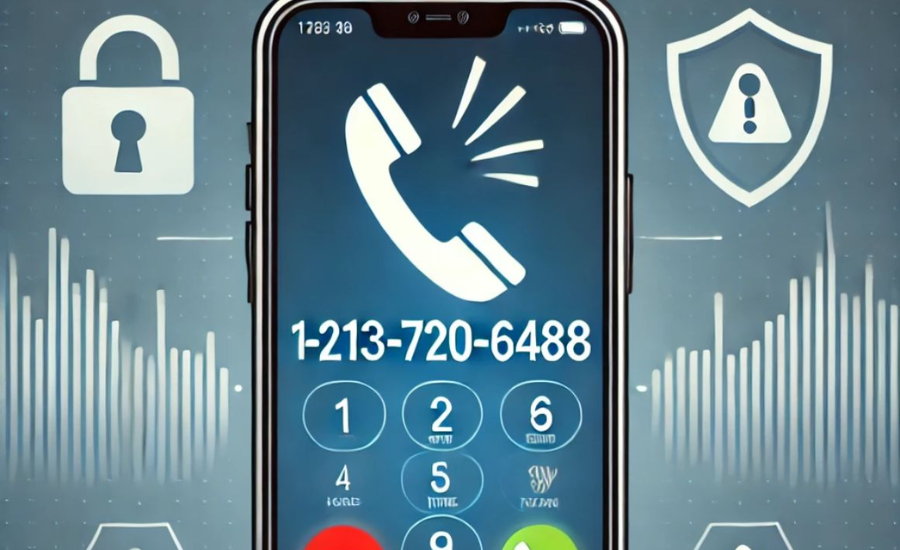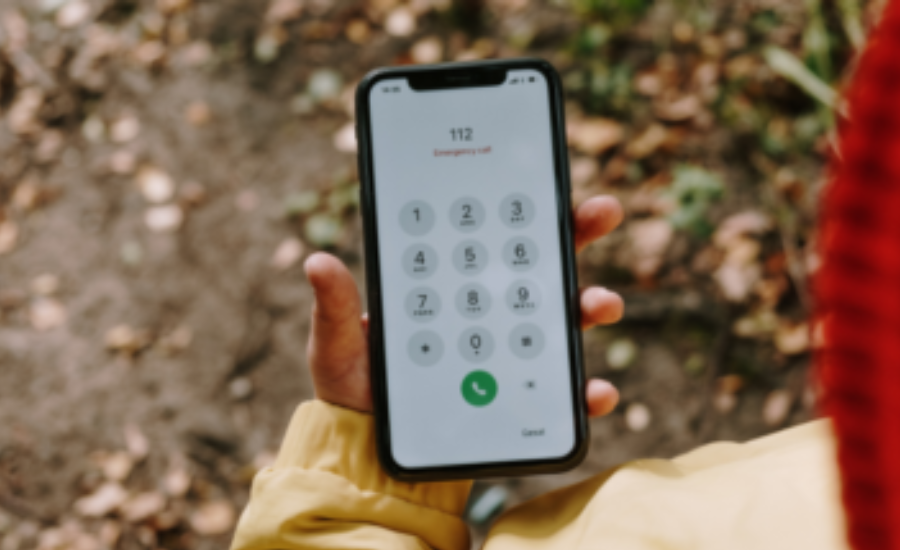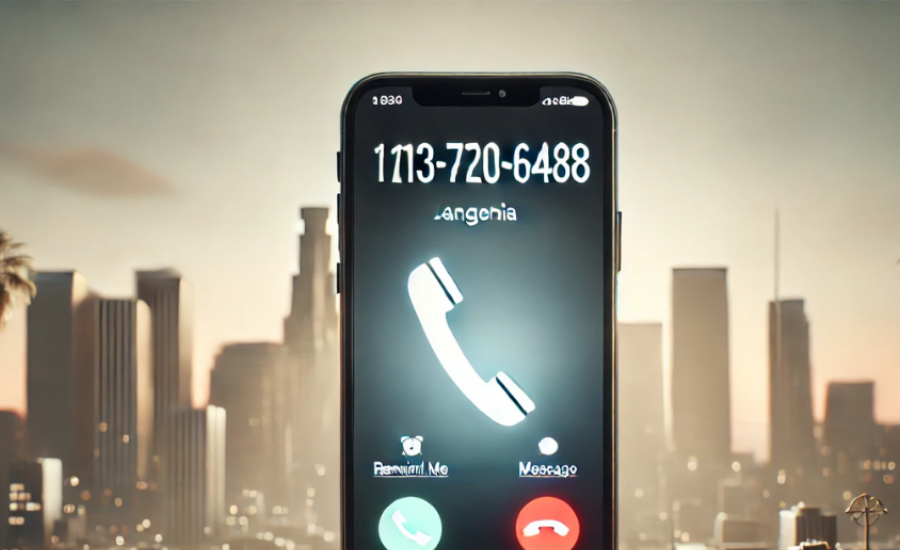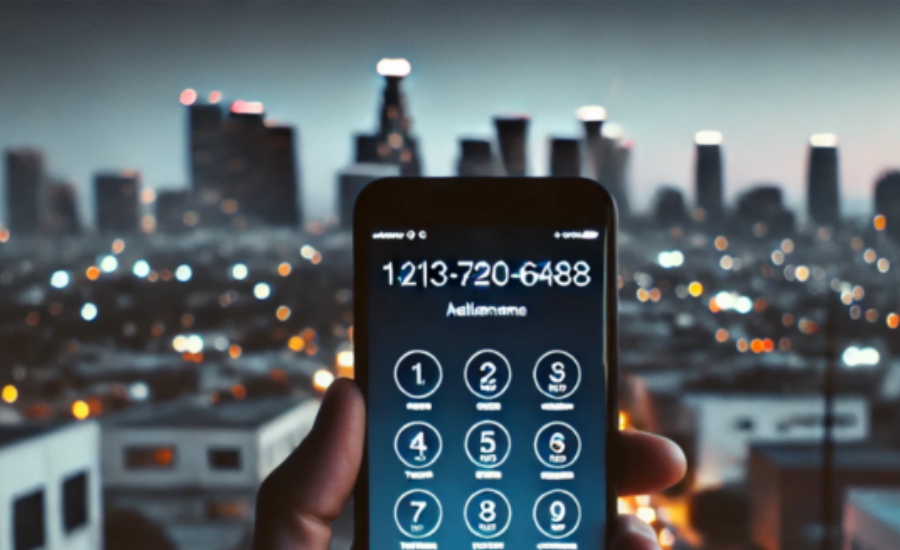1-213-720-6488 This book is crafted in a way that makes its content easily understandable, even for those with limited English proficiency. Our aim is to provide an in-depth exploration of the subject while optimizing the material for search engines. This will enhance its visibility for a broader audience seeking guidance on effectively managing these types of calls. Through clear explanations and practical advice, we hope to empower readers with the knowledge they need to navigate this issue confidently.
Beware of Calls from 1-213-720-6488

The phone number 1-213-720-6488 is linked to the 213 area code, predominantly associated with Los Angeles, California. This number has gained attention across various online platforms and reporting services due to frequent reports of scam calls, spam messages, and robocalls. Many individuals have noted receiving numerous missed calls from this number without any direct communication. Those who have answered typically recount experiences where the caller attempts to mislead them, promote questionable services, or solicit sensitive personal information. Being aware of the nature of these calls is crucial for protecting yourself from potential threats and ensuring the safety of your private information.
Understanding Calls from 1-213-720-6488
Receiving calls from 1-213-720-6488 can raise concerns, making it essential to comprehend the reasons behind these communications. There are several potential scenarios associated with this number.
It may be connected to telemarketing campaigns aimed at promoting various products and services to potential customers. Alternatively, it could be a robocall, delivering automated pre-recorded messages to advertise offers or services.
Additionally, some reports suggest that callers using this number might engage in phishing scams, attempting to obtain sensitive personal information under false pretenses, which poses a significant risk of identity theft. In other cases, the number may be linked to debt collection efforts, whether legitimate or fraudulent.
Staying alert and informed about these possibilities can empower you to handle calls from this number with greater confidence.
The Significance of the 213 Area Code
The 213 area code serves downtown Los Angeles and its surrounding regions, forming a crucial part of the city’s telecommunications network. Established in 1947, it is one of California’s original area codes and remains a key communication hub in Southern California. Due to its location in a densely populated urban center, the 213 area code has become a frequent target for telemarketers, robocalls, and fraudulent activities that seek to exploit the large population and numerous businesses in the area. Understanding the implications of receiving calls from this area code is essential for protecting yourself from potential scams.
Insights on 1-213-720-6488 from Los Angeles
The phone number 1-213-720-6488 is associated with the 213 area code, which encompasses Los Angeles, California. This number has garnered attention across various online platforms and reporting agencies due to its links to potential robocalls, spam, and scams.
While many individuals may have noticed numerous missed calls from this number without responding, others have reported that the callers often attempt to mislead recipients, promote various services, or solicit personal information.
As these types of calls become increasingly prevalent, it is essential to remain vigilant and cautious when dealing with unfamiliar numbers like 1-213-720-6488. Prioritizing the security of your personal information during such interactions is crucial for protecting yourself from potential risks.
Rise of Spam Calls from Area Code 213

In recent years, spam calls from area codes like 213 have surged, primarily originating from unreliable sources that seek to exploit unsuspecting recipients. These unsolicited calls often share common characteristics that can signal a scam.
Many recipients report receiving automated messages that promote questionable products or services. Additionally, caller ID spoofing is frequently employed, causing the number displayed to misrepresent the actual source, which complicates identifying the caller. Furthermore, these spam calls often occur in quick succession, resulting in multiple calls within a short timeframe.
Being aware of these patterns is essential for individuals aiming to safeguard themselves from potential scams linked to area code 213. Staying informed can empower you to make smarter decisions when handling calls from unfamiliar numbers.
Smart Strategies for Handling Unknown Calls
One of the most effective ways to protect yourself from unwanted disturbances is to ignore calls from unknown numbers. If the call is from someone you don’t recognize or were not expecting, it’s wise to let it go to voicemail. Often, spam callers will hang up without leaving a message, while legitimate callers typically will provide some context in their voicemail.
If you notice that a particular number repeatedly disrupts your day, most smartphones offer built-in features to block unwanted calls easily. This simple action can provide immediate relief from persistent interruptions.
It’s also important to report suspicious numbers. Many organizations, including the National Do Not Call Registry, allow individuals to report spam calls, helping to reduce their prevalence. Additionally, popular apps like TrueCaller and Hiya can inform users about potential threats, contributing to a safer calling environment for everyone. By taking these proactive steps, you can significantly enhance your call management and safeguard your personal information.
Recognizing and Responding to Potential Scams
When you receive a call requesting immediate payment, personal information, or claiming a limited-time offer, it’s crucial to recognize the warning signs of a potential scam. Approach these situations with caution. Take a moment to verify the caller’s identity before reacting impulsively. Remaining calm is essential, as scammers often use high-pressure tactics to catch people off guard.
If someone claims to be from a reputable organization, don’t engage with them right away. Instead, hang up and contact the company directly using the phone number provided on their official website. This strategy not only protects you from falling victim to fraud but also ensures you are communicating with a legitimate representative.
Moreover, consider utilizing the Do Not Disturb feature available on many smartphones. By configuring your settings to direct calls from unknown numbers straight to voicemail, you can significantly reduce interruptions from unsolicited calls. This proactive measure enhances your calling experience while providing peace of mind as you filter out potential scams.
The Deceptive Nature of Caller ID Spoofing
A major tactic that enhances the deceitful nature of calls from 1-213-720-6488 is caller ID spoofing. This method enables scammers to manipulate the caller ID information displayed on your phone, making it seem as though the call originates from a familiar area code or a local number. The primary objective of this tactic is to increase the chances that you will answer the call, mistakenly believing it to be from a credible source.
Being aware of this technique is essential for safeguarding yourself against potential scams, as it highlights the importance of verifying unknown numbers before engaging in conversation.
Common Phone Scams to Watch Out For
IRS impersonation scams are prevalent, where fraudsters masquerade as IRS representatives, falsely claiming that you owe back taxes and pressuring you for immediate payment to evade legal consequences. Another common scam involves tech support, with callers asserting that your computer is infected with a virus and offering expensive services to resolve the issue—often requesting remote access to your device in the process.
Lottery or prize scams are also widespread, where callers inform you that you’ve won a prize but require an upfront fee to claim your winnings.
Understanding these scams and how robocallers operate is crucial in protecting yourself from their deceptive tactics. Being informed can empower you to recognize red flags and take necessary precautions against potential fraud.
Stay Alert to Signs of Scams
When you receive a call, exercise caution if the caller pressures you for money, asks for personal information, or presents an urgent offer. These tactics are often strong indicators of a scam. It’s essential to take your time to evaluate the legitimacy of the call before taking any action. Trust your instincts and prioritize your safety by verifying the caller’s identity and claims.
Enhance Your Call Management
Most smartphones come equipped with features that allow you to send all unknown or unrecognized numbers directly to voicemail. Activating this option can greatly reduce interruptions from unsolicited calls, enabling you to concentrate on what truly matters without unnecessary distractions.
By implementing these strategies, you can better safeguard yourself against the rising threat of scam calls while enjoying greater peace of mind.
The Rise of Robocalls

Robocalls have emerged as a significant problem in the United States, affecting millions daily. These automated calls deliver pre-recorded messages, primarily for telemarketing purposes. Unfortunately, many robocalls are not just harmless advertisements; they often have malicious intentions, seeking to trick recipients into disclosing sensitive information or handing over their money. As awareness of this issue grows, it’s crucial for individuals to remain vigilant and informed about the potential risks associated with these calls.
Understanding Caller ID Spoofing
One of the most deceptive tactics used by callers from 1-213-720-6488 is caller ID spoofing. This method enables scammers to alter the caller ID information, making it appear as though the call is coming from a familiar area code or a local number. By doing so, they aim to increase the chances that you will answer, under the impression that the call is from a legitimate source. This manipulation can leave individuals vulnerable, highlighting the importance of staying cautious when dealing with unknown callers.
Identifying Risks Associated with 1-213-720-6488
The 213 area code, which encompasses Los Angeles, California, includes the phone number 1-213-720-6488. This particular number has garnered attention due to its association with robocalls, spam, and various scams reported by multiple online platforms and consumer watchdogs.
While many individuals may have noticed calls from this number ringing through without answering, reports suggest that others have encountered callers attempting to mislead them, promote dubious services, or solicit personal information.
As these calls become increasingly prevalent, exercising caution when dealing with unfamiliar numbers like 1-213-720-6488 is essential. Prioritizing the protection of your personal information is crucial during these interactions.
Also Read: 74.09 0.23 5 32.32
Final Words
The phone number 1-213-720-6488, associated with the 213 area code in Los Angeles, California, has drawn attention due to its links to spam calls and potential scams. Many individuals have reported receiving missed calls from this number, often without any communication. Those who answer frequently encounter callers attempting to mislead them, promote questionable services, or solicit sensitive information. As robocalls and fraudulent activities from this number continue to rise, it’s crucial to remain vigilant. Prioritizing your personal information’s security is essential. By understanding the tactics used, such as caller ID spoofing, you can better protect yourself. Always verify unknown numbers before engaging and consider using features like call blocking or sending unknown numbers directly to voicemail for added safety. Stay informed and cautious to effectively manage potential threats from 1-213-720-6488 and similar numbers.
Stay in the loop for upcoming updates and alerts! Discover Outlooks
